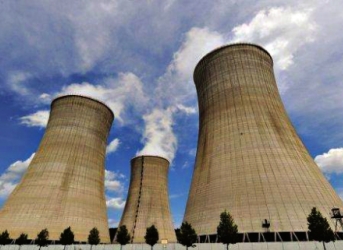Prosperous, energy poor South Korea, largely bereft of indigenous energy resources, is forced to compete in an increasingly turbulent world market.
As the U.S. Energy Information Administration notes, “South Korea was the world’s tenth largest energy consumer in 2008, and with its lack of domestic reserves, Korea is one of the top energy importers in the world. The country is the fifth largest importer of crude oil, the third largest importer of coal, and the second largest importer of liquefied natural gas (LNG). South Korea has no international oil or natural gas pipelines, and relies exclusively on tanker shipments of LNG and crude oil. Despite its lack of domestic energy resources, South Korea is home to some of the largest and most advanced oil refineries in the world. In an effort to improve the nation’s energy security oil, gas, and electricity companies are aggressively seeking overseas exploration and production opportunities.”
Accordingly, Seoul considers any and all possible energy sources, from nuclear to renewables.
Regarding the former, despite the 11 March 2011 disaster at Japan’s Fukushima Daiichi nuclear power complex, South Korea remains fully committed to nuclear energy, where 23 reactors turn out 20.5 gigawatts of electricity daily, 29.5 percent of the country’s total electrical generation capacity, but 45 percent of total electrical consumption. Far from being unsettled by Fukushima, Seoul intends to increase nuclear power’s share of the country’s electricity generation to 60 percent by 2035 by bringing eleven more reactors online in the next nine years, adding 13.8 gigawatts to the nation’s power grid. Nuclear power was instrumental in fueling South Korea rise from being one of the world's poorest nations six decades ago to becoming the world’s 15th largest economy on a nominal GDP basis and by 2010 the world's sixth largest exporter and tenth largest importer.
Far from freezing or abandoning its nuclear programs, a side benefit of South Korea increasing its nuclear power generation is Seoul’s intention of being able to export South Korean nuclear reactors to meet the world’s rising demands for energy.
Mindful of the negative PR “fallout” from the Fukushima catastrophe, and slyly seeking to emphasize the safety of its designs over other competitors, South Korea just hosted a two-day Nuclear Industry Summit. The event, organized by the state-run Korea Hydro & Nuclear Power Co., opened on 23 March and was intended to provide insights for the leaders of 53 nations and four international organizations who subsequently participated in the 2012 Seoul Nuclear Security Summit.
Star guests? U.S. President Obama and Chinese President Hu Jintao, along with the presidents of Finland and four other countries.
But the 800 lb elephant that lurked in the room at both events was surely Fukushima. Prior to Fukushima upending many countries’ interest in nuclear power, over 400 new nuclear power plants were projected to be necessary to meet the world’s booming energy needs by 2030. As only the U.S., Russian Federation, Canada and France had ever exported a nuclear power plant, naturally South Korea wanted to claim a piece of the lucrative action.
But, back to the Nuclear Industry Summit. What did the 200 corporate leaders and energy experts discuss?
Major topics of the gathering included nuclear material control and the safety of nuclear power plants, along with preventing the installations’ nuclear fissile material from falling into the wrong hands. Further ramping up security concerns about possible terrorist intentions, other topics on the agenda included how to safeguard sensitive nuclear technology and data, and, last but not least, in a bow to environmental concerns over the disposal of nuclear waste, alternative fissile power sources to generate energy.
So, will the two events quell global concerns over the implications of the Fukushima disaster for the future of nuclear power?
Did countries interested in their own nuclear power plants, including Vietnam, Mexico and Turkey, all line up at South Korea’s KEPCO booth to determine how to acquire a nuclear facility of their very own, or did they stay away?
ADVERTISEMENT
Korea Hydro and Nuclear Power Co. chief executive Kim Jong-shin, who headed the summit organizing committee had no doubts, commenting, "The Nuclear Industry Summit is an opportunity to let the world know about the strengths of Korea's nuclear industry. We also expect it to greatly contribute toward nuclear power plant exports by allowing the international community to recognize the importance of nuclear safety."
While Kim has every reason to be proud of South Korea’s engineering expertise, earthquakes and tsunamis currently remain outside the influence of South Korea’s chaebol industrial conglomerates, capable though they may be. In the end, many decisions might be made on the basis of who attendees presume has more clout over nuclear power’s future, Mother Nature or one of Asia’s most technically advanced nations.
By. John C.K. Daly of Oilprice.com


















